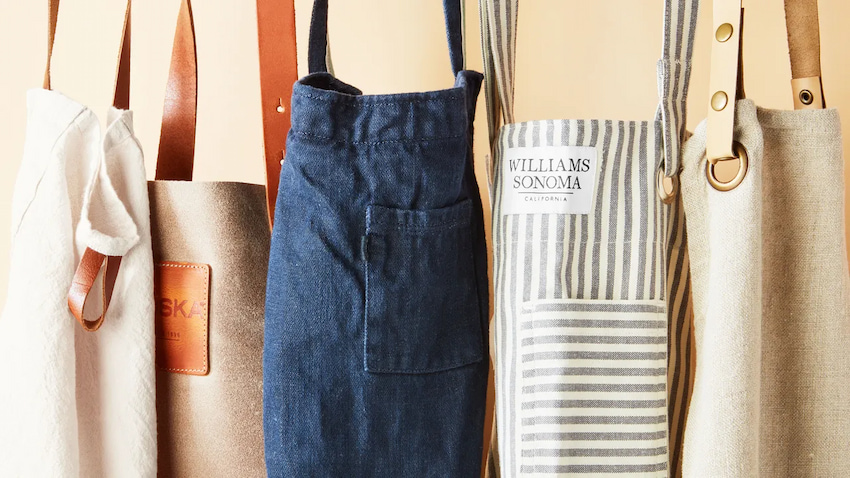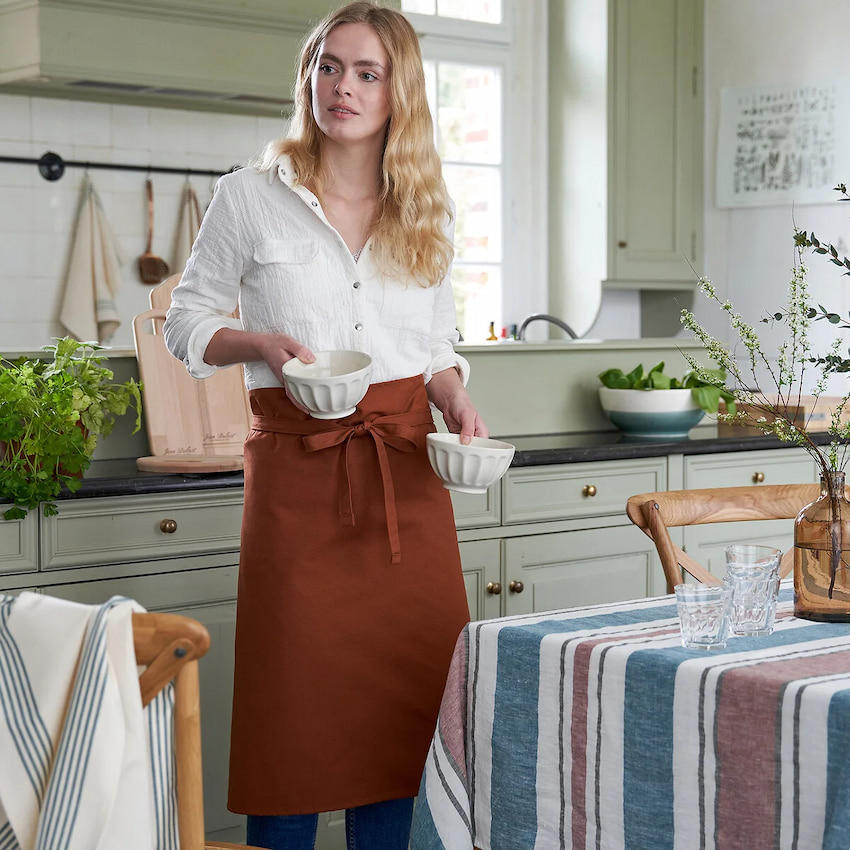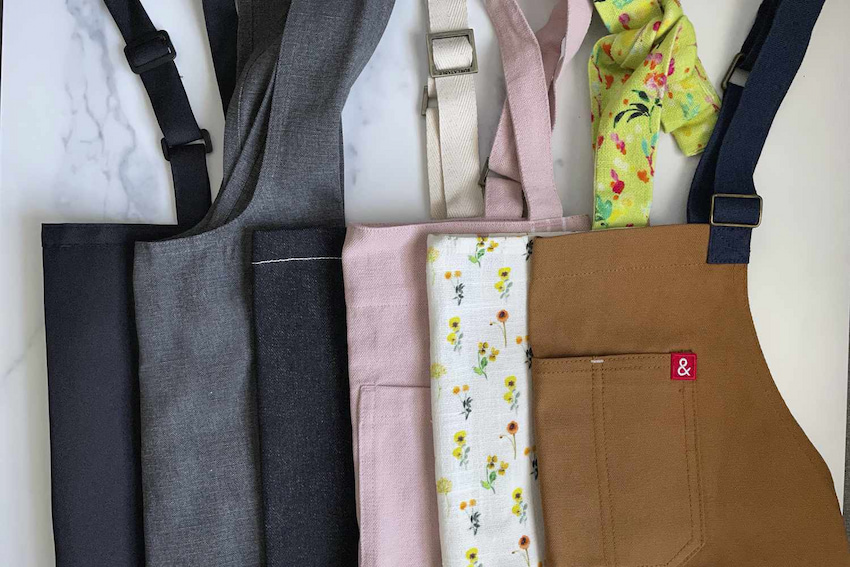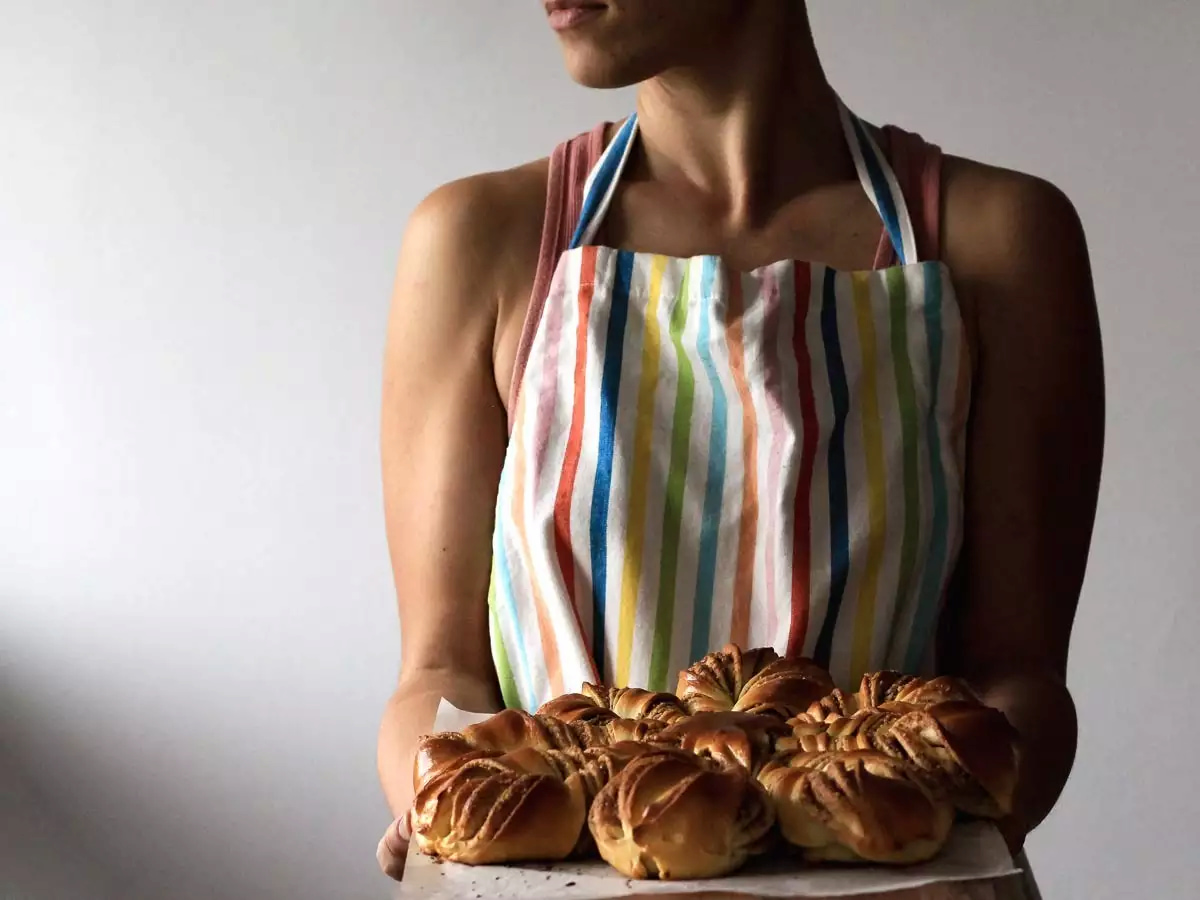Chefs aren’t the only ones who should wear aprons. Even if you prepare three meals (or fewer) daily, these protective garments shield your clothes from spills and splatters of hot oil, tomato sauce, and everything in between. Since removing stains from clothing can be difficult, kitchen aprons are here to absorb the bulk of the mess.
What Should I Look for in a Kitchen Apron?
When searching for a kitchen apron, you’ll come across various sizes, shapes, and designs. Paying attention to these and the fabric type, size, and extra features, such as pockets, can help you pick the proper apron for your job.
Types of Aprons
Knowing which style of kitchen apron is the best choice and will do the job is essential when looking for one for personal use, business uniforms, or anything in between. In light of this, we have chosen to discuss the four most common styles, their differences, and which suits particular needs the best.

Bib
This traditional style has a loose neck loop and ties at the back of the waist. Additionally, most full-cover bib models have pockets so those who wear them can keep order pads, guest checks, thermometers, or other handy kitchen tools while they work.
Bib overalls are perfect for chefs and servers; they protect from spills and backsplashes and provide space to wipe their hands.
Waist
Waist and server pinnies don’t cover the upper body. They are most comfortable for servers to walk around your facility because of their shorter length. Additionally, most models have pockets so the waitstaff can easily access pens, guest checks, and drink straws.
This model works best for front-of-house personnel, bussers and chief waiters or waitresses.
Four Way
A pinny that has four layers is the ideal choice for those who need to wear their aprons several times before they can wash them, such as chefs and back-of-house kitchen staff. The wearer can simply flip it over to the next spot that is clean if the outer layer gets dirty. These aprons will reduce the amount of laundry needed because your staff won’t need to change aprons as frequently.
Bistro
Similarly to the 4-way and waist aprons, bistro aprons don’t cover the upper body. Yet, they’re long, offering more coverage for pants, which is one significant difference. Additionally, most have pockets so the waitstaff can easily access pens, guest checks, and drink straws.

Besides being perfect for front desk personnel, bistro aprons are ideal for messy tasks like wiping down tables because their long length shields them from stains.
Cobbler
Cobbler aprons, also called smock aprons, provide front and back coverage. You can adjust the side ties to tighten or loosen the apron. They end at the waist or mid-thigh but are great for keeping employees’ shirts clean underneath. You can usually see bakery, school, hospital and housekeeping staff wearing this model.
Dishwasher
These water-resistant garments are available in full-length styles that reach the knees. That’s especially useful for the dish room, where staff is more likely to experience significant splashes. They frequently employ water-resistant materials, but most are also heat-, fire-, and cut-resistant. When exposed to build-up on pots, equipment dirt and debris, grease, and chemicals, these pinafores will help protect clothing and skin.
Dishwasher models are specially made to assist dishwashers at restaurants, hotels, cafeterias, or assisted living facilities to stay dry while they clean large quantities of dishes.
Design and Fit
An adjustable neck loop and a long waist tie are two essential components that help guarantee a good fit. Aprons need to be adaptable because they, typically, are one size fits all.
Another crucial factor to consider is length because an apron that is too long can make moving difficult and uncomfortable. For maintaining an ideal range of motion, knee length is frequently suitable.
Performance
Your best bet for shielding your clothing from hot oil and sauce splatters is to use thicker, heavier materials. When purchasing an apron online, check the length and width measurements because some will cover more of your body than others.

Materials
Next, check that the fabric you choose for your apron is the right one. You might be a butcher looking for an apron to cover up the bloody mess, or you might be the family’s favourite Thanksgiving turkey carver. Perhaps you’ve recently developed an interest in baking your sourdough bread. Fabrics are critical when choosing an apron, whoever you are.
You’ll need some heavy protection for blood splatter or scorching hot meat juices, whereas you’ll need something more lightweight to protect against a flour storm. It might be hard to choose from the many available kinds of cotton, linen, denim, and even leather aprons.
Consider it this way: the thicker the fabric, the more protection you will receive. While cotton blends are frequently simpler to wash and maintain, they also don’t offer the same level of stain resistance as a heavy pair of jeans. The home baker will probably need something more lightweight, like good kitchen linens or a cotton blend, whereas the butcher or griller may want some spark protection and go with a leather or heavy denim apron.
Extra Features
Depending on your cooking style, extra features like pockets may be handy. Some like to keep a towel in a side pocket on their clothing to dry their hands. However, if you have a small kitchen where everything is within reach, you might not need an apron with pockets. The same is true of built-in pot holders; if you don’t need them, leave them out.
If you’re most likely to get dirty from the waist up, an apron with a bib is much more beneficial than one without. Tie-waist options fitted close to the body may be best in the professional kitchen, while a cross-back apron that is very loose and at ease is perfect at home.

